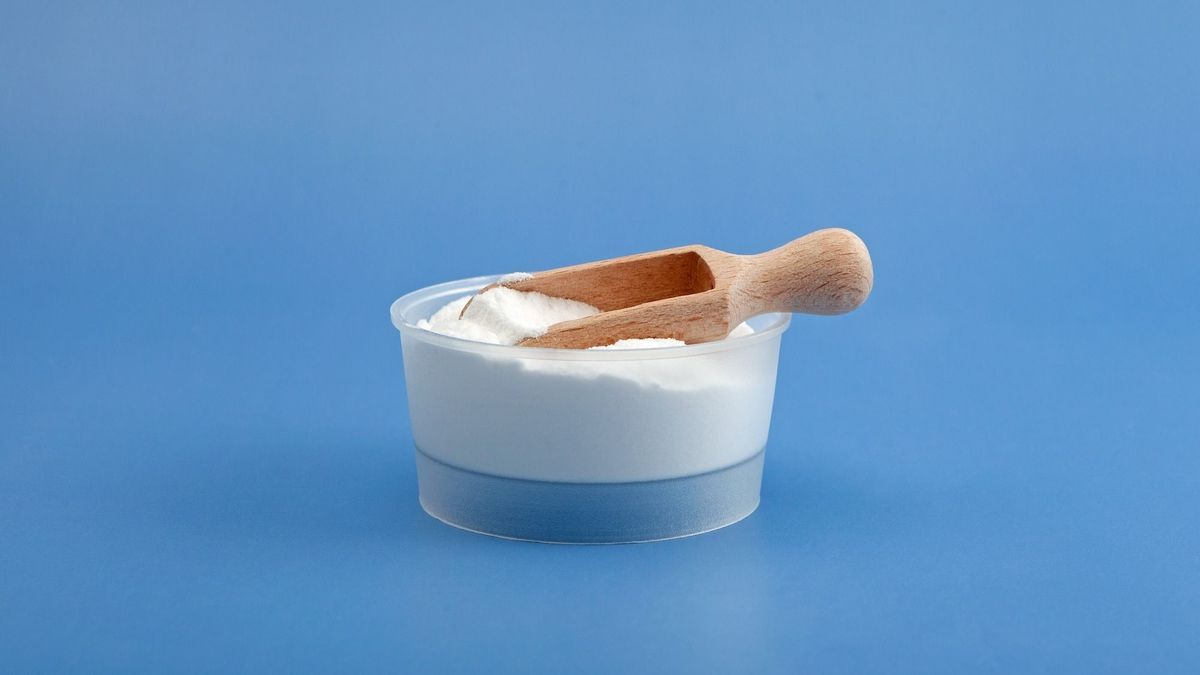
Also known as diphosphate, E450 is one of the controversial food additives. This texturing agent, which helps to make a food more attractive to the consumer, is nevertheless found in a wide variety of industrial foods. What is it used for exactly? What are its potential health risks? The answers from Anthony Fardet, researcher in preventive and sustainable nutrition and Claudine Plumail, dietician and nutritionist.
Origin: What is E450 (diphosphates or pyrophosphate) and what is it used for?
“Diphosphates are the result of the condensation of two heated phosphate molecules” explains Claudine Plumail. They can be composed of different forms of phosphates, including tricalcium phosphate (E450B), disodium phosphate (E450a) or even dipotassium phosphate (E450C). These different phosphate salts are used in a wide variety of food and beverages for various functions.
“E450 diphosphates are often used as acidity regulators (maintains pH), stabilizing agents to maintain texture and to preserve the degradation of foodstuffs, leavening agent (same action as baking powder), texture agent by promoting the formation of foam for example, humectant to extend the shelf life of products that contain water, and emulsifying agent to stabilize oil and vinegar mixtures” explains the dietician.
Diphosphates are listed in the Codex Alimentarius (collection of international standards relating to the safety of food products) as acidity regulators, leavening agents or even stabilizers.
How are food additives classified?
Food additives are classified into 9 categories depending on their role:
- Food colorings, which can be of natural or synthetic origin;
- Preservatives to extend their shelf life;
- Antioxidants to prevent the oxidation of fats in foods;
- Sweeteners to give a sweet flavor to foods without adding sugar;
- Emulsifiers to stabilize mixtures of ingredients;
- Texturing agents (thickeners, gelling agents, stabilizers and bulking agents);
- Flavorings and flavor enhancers;
- Acidifiers to regulate acidity;
- Leavening agents added to baked goods to help dough rise.
Ingredient E450: a halal or haramn, vegan and gluten-free food additive?
E450 is a halal food additive. It is widely used in the halal food industry, particularly in the production of halal baked goods, dairy products and processed meats. It is also suitable for vegan, gluten-free and kosher diets.
In what foods is it found?
These additives can be found in the list of ingredients in full or under the code E450. They are present in a wide range of industrial foods, starting with bakery products such as bread, aperitif biscuits, cakes and certain infant foods such as rusks or biscuits. Phosphate salts are often used in processed cooked meat products, such as sausages, hamburgers and chicken nuggets, and in some fish products, as stabilizers to improve texture and preservation.
Some dairy products, such as processed cheeses, fluid milk, ice cream and dairy desserts, may contain phosphate salts as stabilizing agents to maintain texture and consistency.
Finally, many processed foods, such as canned soups, sauces, soft drinks, processed potato products and prepared meals, may contain phosphate salts as stabilizing and regulating agents. pH.
NO to diets, YES to WW!
Risks of allergies, danger for the heart, osteoporosis… Is E450 dangerous?
Although at moderate consumption, phosphate products do not present a danger to health, their safety on health, particularly cardiovascular, is not certain at high doses, however, these are additives that are found in many very many products. Some studies1 thus revealed that the presence of high levels of phosphates in the walls of blood vessels was a cardiovascular risk factor. Following these observations, EFSA reduced the acceptable daily intake (ADI) of diphosphates in industrial foods to 70 mg/kg body weight. However, the estimated exposure levels are now likely to exceed the ADI for children and adolescents, high consumers of vector foods, as well as for people suffering from renal insufficiency.
Furthermore, since dietary phosphates can influence the balance of minerals (calcium and phosphorus) in the body, excessive consumption of phosphates can lead to increased excretion of calcium by the kidneys, which can contribute to the development of osteoporosis.
On the other hand, diphosphates are not considered additives with high allergenic potential. Allergic reactions are therefore rare. “Whatever happens, the health risks of additives should not only be assessed on the additives studied in isolation. Even if one of them poses little or no health problem, that does not mean that its consumption is safe. Combined with other additives, it can become problematic: this is what we call the cocktail effect. Furthermore, we have no scientific perspective on the long-term health effects.” indicates Anthony Fardet, author of “Stop ultra-processed foods!” published by Thierry Souccar. According to this expert, the consumption of any additive must be limited as much as possible.
What additives are prohibited?
Food additives that are not explicitly authorized in Europe are considered prohibited. The list is therefore non-exhaustive since currently, 320 additives are authorized in Europe, while – for example – some 450 are authorized in Canada. The list of additives authorized in Europe is available on the website of the Ministry of Agriculture and Food Sovereignty.

